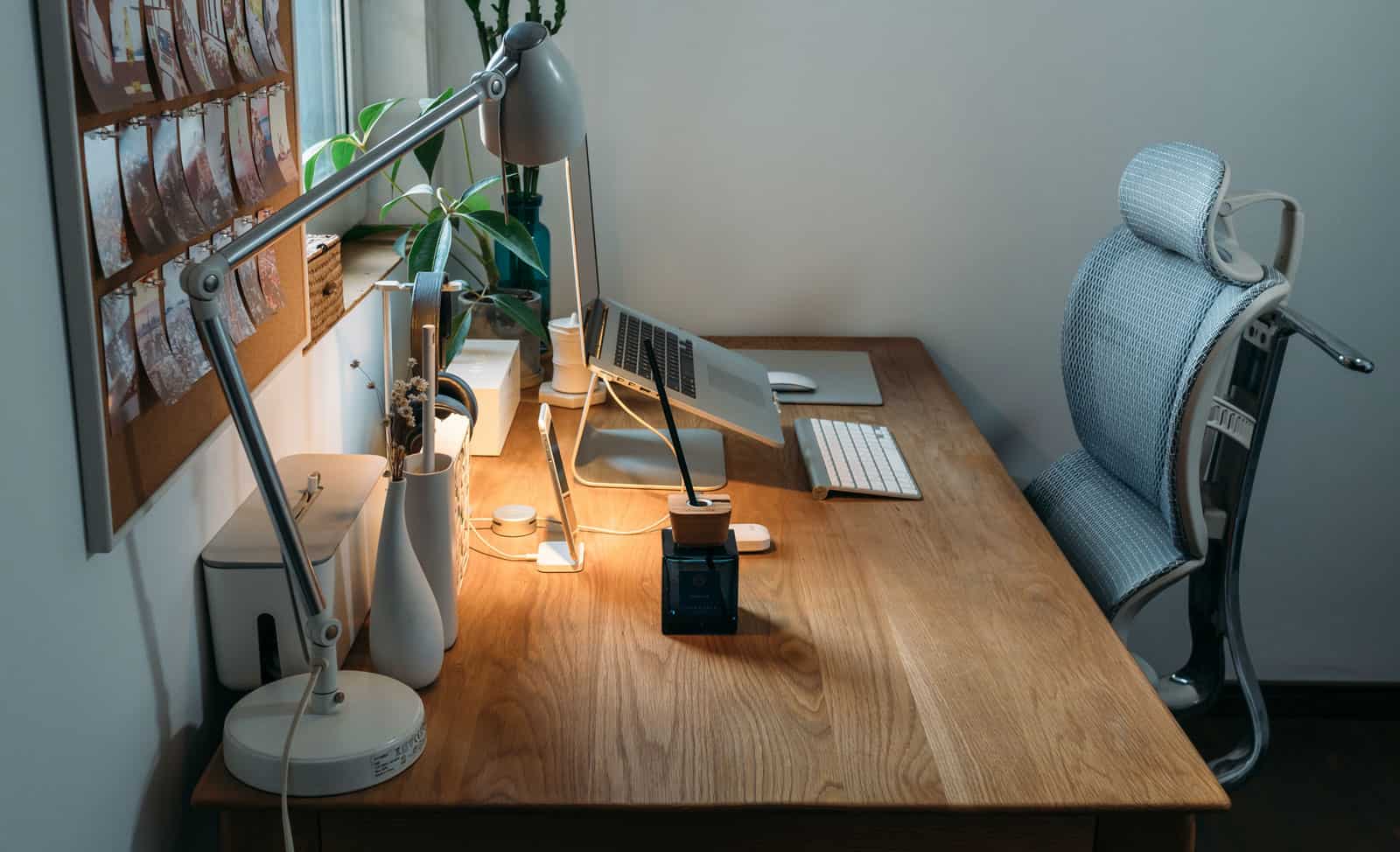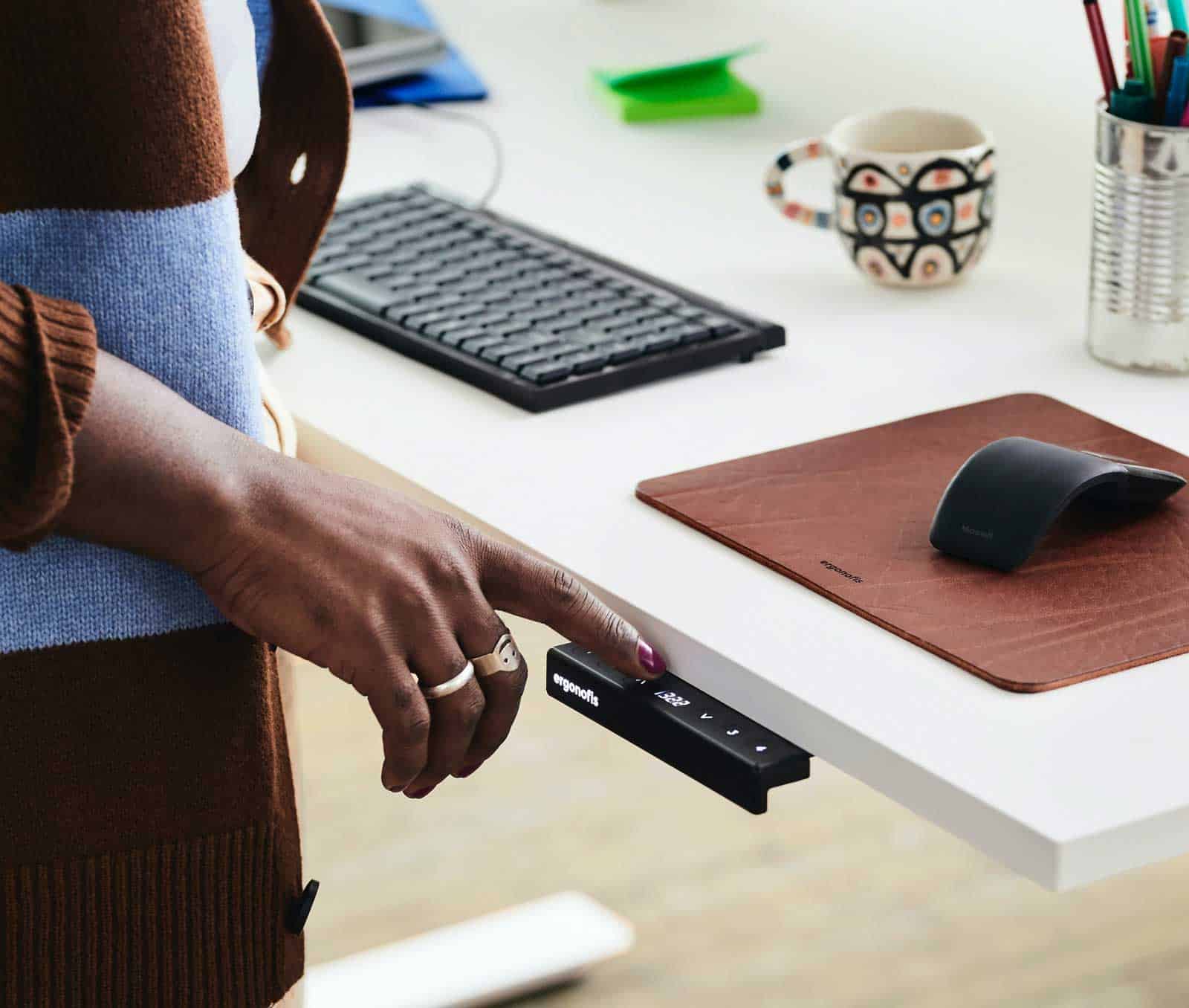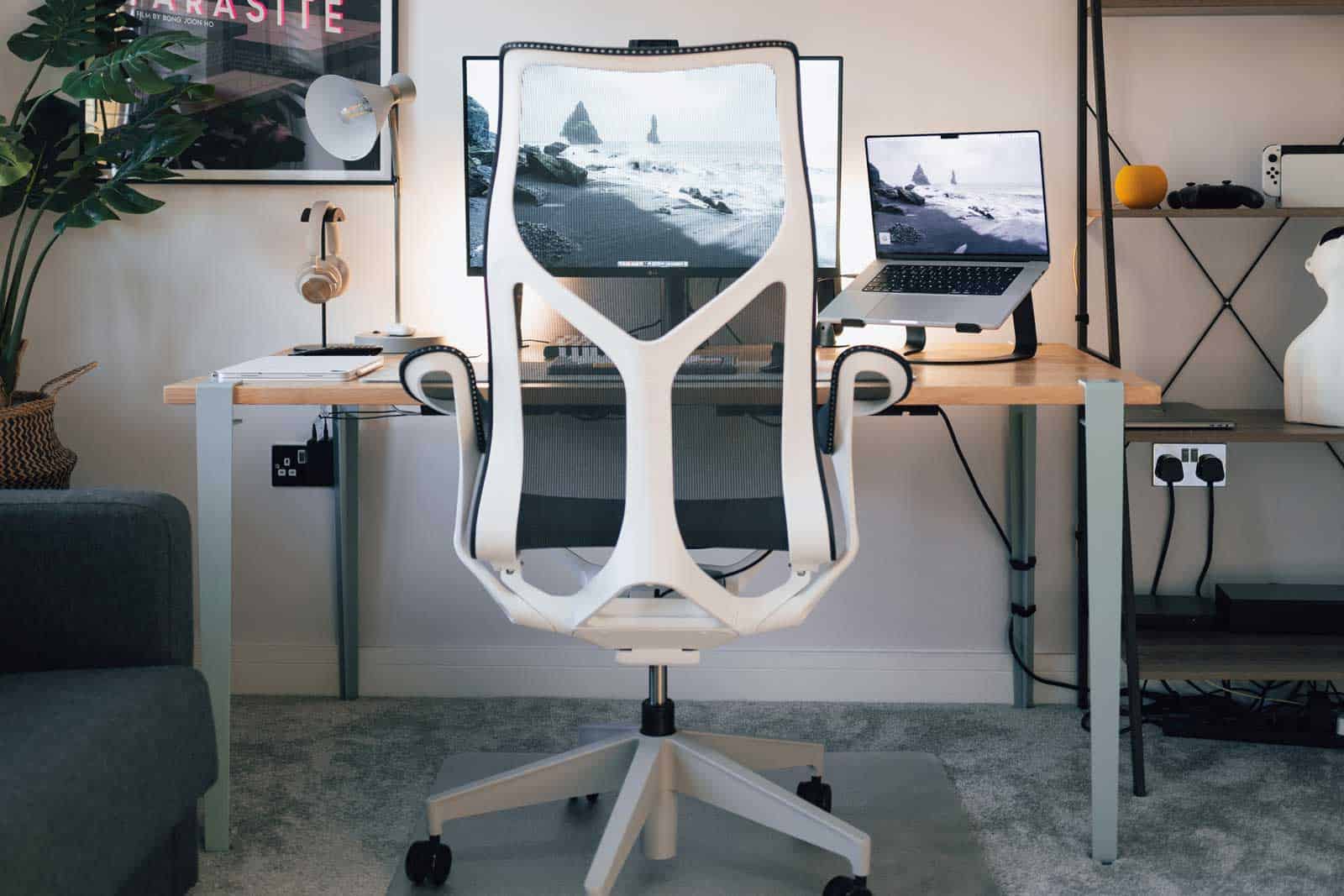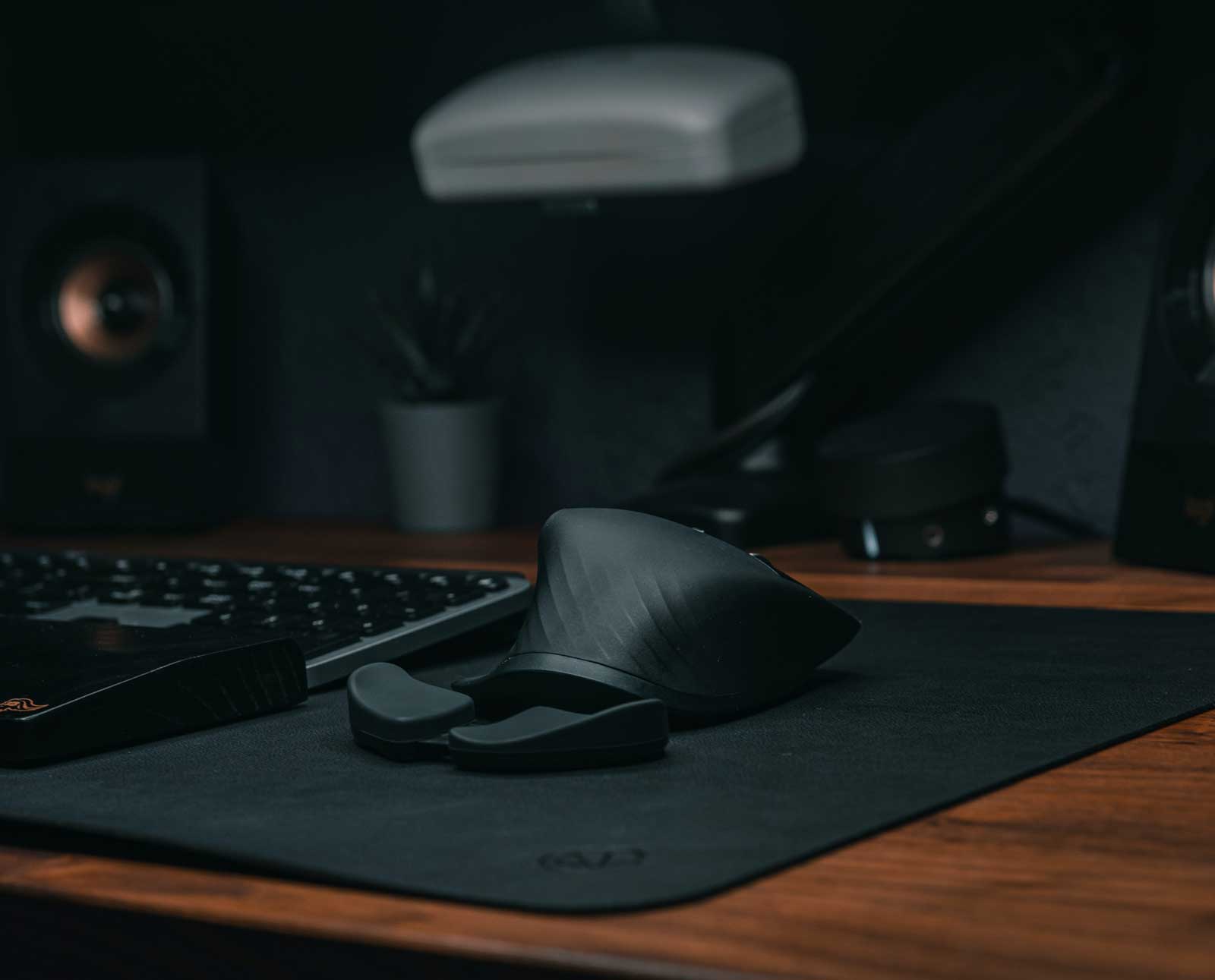Are you tired of dealing with back pain, neck strain, and other discomforts that make it hard to focus on your work?
From adjustable chairs that support proper posture to standing desks that promote active movements, ergonomic furniture has been proven to help reduce fatigue and improve productivity among remote workers.
Ergonomic furniture is designed to support the natural alignment of the body, reducing stress on the joints, muscles, and tendons, and improving circulation. Not only can it increase your comfort and reduce your risk of injuries, but it can also boost your productivity and overall well-being.
It also helps to reduce the risk of injury caused by sitting for extended periods of time, which can have long-term health consequences.
In this article, we’ll take a closer look at the amazing benefits of ergonomic furniture and how it can help you enjoy a productive and pain-free workday.
Key Takeaways
- Ergonomic furniture can improve employee health productivity by promoting comfort and reducing fatigue and pain, allowing workers to be more productive and efficient.
- Ergonomic furniture can also improve office workers’ safety by helping to reduce the risk of musculoskeletal injuries, such as carpal tunnel syndrome and lower back pain.
- Ergonomic furniture is typically more expensive than standard office furniture because of its extra features and more durability.
- Ergonomics is just as important, if not more important for those who work from home.
Real quick before we get too far into this: if you need more tech help or if you want to get more great ideas for your home office and connect with other remote workers join my free private Facebook group, Home Office Hacks here.
What is ergonomic furniture?

The human body was not designed to sit at a desk all day. Prolonged sitting, especially in an improper position, can lead to a number of negative health consequences.
It’s a very physiologically unnatural position for your body to be in and creates all kinds of stress points, and unnatural positions; can lead to poor posture, which can cause strain on the back, neck, and shoulders, leading to muscle imbalances and pain.
Not only that but it can also lead to poor circulation, as the muscles in the lower body are not being used and blood flow is restricted. This can lead to an increased risk of heart disease, diabetes, and other health problems.
Sitting at a desk all day can also lead to eye strain, as people may be looking at screens for long periods of time without taking breaks. This can cause dryness, redness, and fatigue in the eyes, as well as headaches and neck pain.
But we still have to get work done, right?
So how do we combat the wear and tear on our body that sitting at a desk can bring?
This is where ergonomic office furniture becomes so important.
Ergonomic furniture is designed to provide optimal comfort, safety, and health benefits to the user. It is designed to reduce physical stress on the body, improve posture, and reduce the risk of repetitive strain injuries. Ergonomic furniture is often adjustable and can be tailored to the user’s individual needs.
An average American sits around 17,000 hours on an office chair in a year. Ergonomic furniture is becoming increasingly popular among desk workers as they are becoming more aware of the need for a healthy and comfortable working environment.
Ergonomics is the study of how people interact with their environment, and ergonomic furniture aims to maximize comfort and productivity in the workplace.
Unlike traditional furniture, ergonomic solutions are designed with the user and environment in mind. It is often made of eco-friendly materials (also known as ‘green ergonomics’)and is meant to be energy efficient. This can help reduce the carbon footprint and promote sustainability.
The cost of ergonomic furniture is often more expensive than standard office furniture, but the long-term benefits of ergonomic furniture can make it worth the investment.
Difference between ergonomic furniture and traditional furniture

Here is a table that compares some key differences between ergonomic furniture and traditional furniture:
| Feature | Ergonomic Furniture | Traditional Furniture |
| Design and function | Designed to support the body and reduce strain on the muscles and joints | Not designed with ergonomics in mind, it may or may not provide adequate support or comfort |
| Adjustability | Adjustable to fit the user’s body and allow for movement | Mostly fixed in place, may not be adjustable to fit the user’s body or allow for movement |
| Comfort | Designed to be comfortable and reduce pressure points and improve bad posture | May not be as comfortable or provide adequate support |
| Material and construction | Made with high-quality, durable materials and solid construction | May be made with lower-quality materials and not as durable |
| Price | Can be more expensive due to the higher quality materials and construction | Typically less expensive than ergonomic furniture |
| Potential health benefits | Can help improve posture, reduce muscle fatigue and strain, and potentially improve circulation and overall health | May not provide the same level of support and comfort, and may not offer the same potential health benefits as ergonomic furniture |
It’s important to note that these are generalizations and that there can be significant variation within each category. Some traditional furniture may be comfortable and well-made, while some ergonomic furniture may be less so.
Additionally, the benefits of ergonomic furniture may depend on the specific needs and preferences of the user.
7 effects on ergonomic furniture on productivity and comfort

1. Improved posture
Prolonged sitting can adversely affect a person’s posture and back health. Even if you’re comfortable sitting, long working hours are not good for your body.
Ergonomic furniture can help keep the spine in alignment and provide support for the lower back, allowing users to sit for long periods of time.
It should be adjustable and provide adequate lumbar support. A footrest can also help keep the feet in the correct position and reduce strain on the legs and lower back.
An adjustable desk will fit the user’s height. This will keep the neck, shoulders, and arms in a proper position.
Ergonomic furniture also has a place to rest the wrists and hands, such as a wrist pad or armrest.
Here are some posture improvements you’ll notice while using ergonomic furniture:
- Upper arms will be parallel to your spine.
- Buttocks will be pressed against the back of the chair.
- Eyes will be aimed at the center of the screen.
- Chin parallel to the floor.
- Knees will be pointed straight evenly.
- Body weight will be distributed on both feet.
2. Improved blood circulation
If your seat isn’t adjusted properly to your body, it can cause poor blood circulation in the head, neck, shoulders, or legs.
Sitting in an ergonomic chair can help improve blood circulation and reduce the risk of developing deep vein thrombosis (a blood clot in a deep vein of the leg, pelvis, and sometimes arm).
The latest ergonomic office chairs use a waterfall edge feature. In these chairs, the front edge features a rounded waterfall-like edge (similar to a rock smoothed by water).
This feature is designed to provide a natural and comfortable seating position that promotes good blood circulation in lower limbs, preventing swelling and numbness.
The edge’s curved shape allows the user to sit with their legs slightly elevated, which helps to ease pressure points on the legs and back.
The waterfall edge also encourages the user to keep their feet flat on the floor, which helps to reduce strain on the lower back. This ergonomic feature helps to provide optimal support and comfort for long periods of sitting.
Comfortable chairs can help encourage the body to move. Sitting in one position for extended periods of time can lead to poor circulation, as the body does not have the opportunity to stretch and move.
3. Improved concentration
Ergonomic furniture is designed to provide comfort and support to the body, reducing physical stress and strain that can lead to distractions and decreased concentration.
Properly adjusted ergonomic furniture encourages proper posture, which can reduce fatigue and promote better breathing. This improved breathing can help with increased concentration and focus, allowing you to stay on task for longer periods of time.
In addition to providing comfort and support, ergonomic furniture can also help to create an organized and distraction-free workspace.
Desks and chairs with built-in storage solutions can help to reduce clutter, helping to keep the workspace tidy and organized. This can help to reduce the amount of visual stimuli, allowing users to focus more easily on their tasks.
4. Reduced back pain
Ergonomic office furniture has great importance in helping prevent lower back pain.
Here’s how you can prevent lower back pain using ergonomic furniture: just try to keep the top of your pelvis level, like a bowl of soup that shouldn’t spill forward or backward.
When you’re sitting, the front and back parts of your pelvic bones (called the ASIS and PSIS) should be level with each other.
If you rock side to side, you should feel pressure on the bony structures called the ischial tuberosities (also known as the sit bones or sitz bones).
Many people tend to sit with their pelvis tilted backward, which is called posterior pelvic tilt or sacral sitting. This position can put more strain on the ligaments and muscles in the low back and can cause more pressure on the lumbar discs.
When you sit in this position and lean against the back of the chair, it can create a hammock effect in the lumbar spine. To help prevent these problems, try to sit with a slight arch in your low back, with the convex part facing forward.
5. Reduced emotional stress
Fatigue combined with a frustrating and marginally comfortable work environment can never yield good results, especially if you’re dealing with emotional stress or other mental health challenges.
Ergonomic furniture is designed to help reduce not only physical but also emotional stress by providing support to the body, allowing for a more comfortable sitting or working experience.
Ergonomic chairs, mouse, and desks are designed to improve employee satisfaction and fit the body’s natural curves, providing support for the head, hand, neck, and back.
6. Enhanced productivity
Healthy employees = greater productivity
Studies have shown that workers who use ergonomic furniture are more productive than those who don’t due to the improved comfort and posture that it provides.
The workstation becomes more productive when there is less clutter, more leg space, good posture, and extra adjustability.
According to Business.com, ergonomics can increase employee productivity by up to 25% in any office environment. Not only do you get greater productivity which yields greater results, but you also save money
In addition to the direct benefits of increased productivity, ergonomics can also lead to cost savings by reducing the number of employee injuries and absenteeism, as well as increasing employee morale and retention. By investing in ergonomics, businesses can improve the overall health and well-being of their employees, while also increasing their bottom line.
It’s important to note that while you can notice an increase in productivity when using ergonomic furniture, it is just one factor that can impact productivity in the workplace. Other factors, such as workload, task demands, energy levels, and office space work environment, can also influence productivity.
7. Reduced risk of musculoskeletal disorders
Ergonomic design can be an invaluable asset for remote workers looking to reduce their risk of musculoskeletal disorders.
These disorders can be caused by sitting in an awkward position for extended periods of time. These include:
- Myofacial pain syndrome (fibromyalgia)
- Tendinitis
- Repetitive strain injury
- Rotator cuff injuries
- Epicondylitis
- Trigger finger
- Carpal tunnel syndrome
Adjustable desks and chairs can be really helpful for ensuring that you’re at the correct height for your workstation, which can help reduce strain on your body.
Ergonomic keyboards and mice are also important to consider, as they can help minimize the risk of carpal tunnel syndrome and other musculoskeletal disorders by ensuring that you’re typing and clicking in an ergonomically correct position.
And don’t forget about adjustable monitor stands — they can help reduce neck strain and other musculoskeletal disorders by allowing you to adjust the height of your monitor to the correct angle.
Other accessories, like an ergonomic mouse pad, can also be useful for ensuring that you’re using your mouse in an ergonomic position.
Types of ergonomic furniture for home office and their costs

Here are some types of ergonomic furniture that may be suitable for a home office, along with some examples of items within each category:
1. Ergonomic chairs
Price range: $50 — $5000
Ergonomic chairs are manufactured to support the body in a natural, comfortable position and can help reduce the risk of musculoskeletal disorders and fix poor posture. Examples of ergonomic chairs for a home office include:
- Office chairs
- Gaming chairs
- Posture chairs
2. Ergonomic desks
Price range: $100 — $3000
These are desks that are designed to be comfortable and supportive while working, with features such as adjustable heights and tilting surfaces.
Here are some types of ergonomic desks for a home office include:
- Standing desks
- Height-adjustable desks
- Sit-to-stand desks
- L-shaped desks
3. Ergonomic keyboards and mice
Price range: $50 — $250
These are computer input devices/accessories that are designed to reduce the risk of musculoskeletal disorders by promoting a natural hand and wrist position.
They mostly come as a bundle.
4. Ergonomic footrests
Price range: $20 — $150
Ergonomic footrests are made to support the feet in a comfortable position and can help reduce the risk of leg and foot fatigue.
5. Ergonomic lighting
Price range: $15 — $250
Ergonomic lighting reduces eye strain and fatigue by providing a comfortable and natural light source, especially in a residential environment. Examples include:
- LED desk lamps
- Mouse and keyboard RGB lights
- Lightboxes
- Desk lamps
- Studio lamps
6. Ergonomic monitor and laptop stands
Price range: $20 — $100
The monitor and laptop stand are designed to support a computer monitor at a comfortable and ergonomically correct height and angle.
7. Ergonomic wrist rests
Price range: $10 — $60
Wrist rests are designed to provide support for the wrist, helping to reduce the strain of long periods of typing or using a mouse.
They are often used in conjunction with an ergonomic keyboard or mouse, helping to ensure that the user’s wrists are kept in a neutral and comfortable position.
Home office setup and ergonomics

While the benefits of ergonomic furniture on productivity and comfort are well-established, many people who work from home, especially those who had to transition quickly during the pandemic, haven’t put a lot of thought into their home office setup, often using places like the kitchen table or a couch as makeshift desks.
One of the main reasons people don’t think about ergonomics when setting up their home office is because they may not have the budget for ergonomic furniture. Ergonomic furniture can be more expensive than traditional furniture, and many people may not see the value in investing in it. However, the long-term benefits of ergonomic furniture, such as increased comfort, reduced injuries, and improved productivity, can make it a worthwhile investment.
Another reason people may not think about ergonomics when setting up their home office is because they simply may not be aware of the importance of ergonomics. Many people working from home may not realize at first the negative impact that poor posture and improper ergonomics can have on their health and well-being.
Overall, it is important for people who work from home to be mindful of their home office setup and consider investing in ergonomic furniture to improve their comfort, productivity, and overall well-being. While it may require some initial investment, the long-term benefits of ergonomics can make it a worthwhile investment.
When working in an office, you typically have access to ergonomically designed furniture and equipment, such as adjustable desks and chairs, which can help prevent strain on the body and promote proper alignment. However, when working from home, people may not have access to these types of resources and may be more prone to using makeshift desks and chairs that are not designed for ergonomic use.
People who work from home may be more likely to work longer hours and take fewer breaks, which can increase the risk of discomfort and injuries. Ergonomic furniture and equipment can help reduce the strain on the body and promote proper posture, reducing the risk of injuries and discomfort.
By taking the time to create a comfortable and ergonomic home office, people can help prevent the negative effects of poor posture and improper ergonomics and enjoy the many benefits of working from home.
Next Steps
Want to join others who are creating the most amazing home offices and get more tips, tricks and hacks on how to make your home office the best it can be?
Join my brand new free private Facebook group, Home Office Hacks to connect with other home office hackers to make your space the best!
